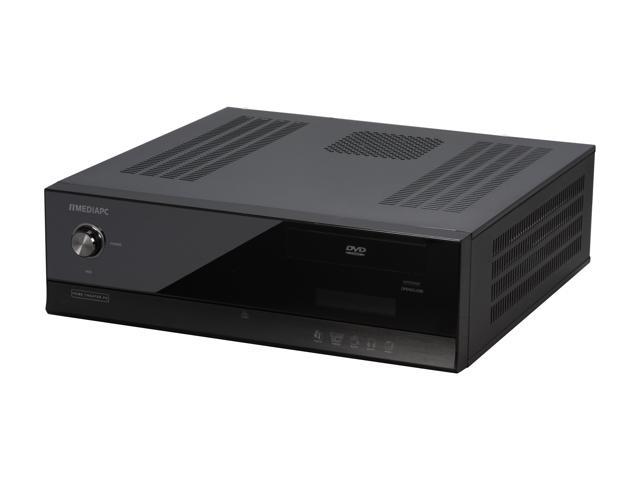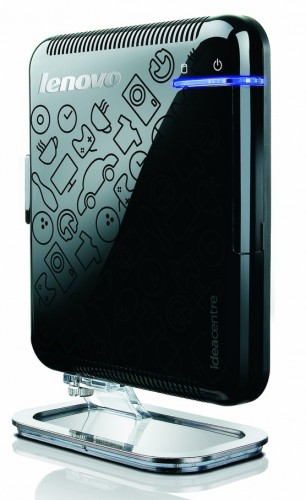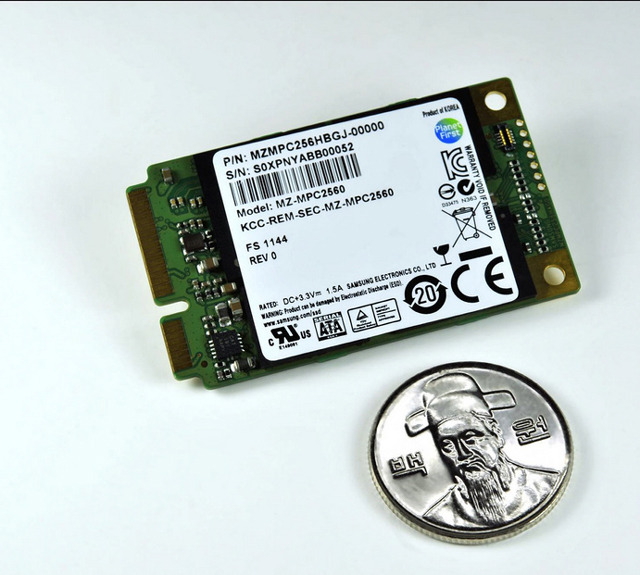We'll I'm selling my AsRock Vision HTPC to my uncle. He saw how my setup was and was floored at how good it is. He got a little disappointed though because he said he couldn't afford one and a NAS. I offered to sell him my HTPC for about half the price I paid for it and told him that he didn't have to buy a large NAS but maybe like a two or three bay unit and it would be cheaper.
This gives me an opportunity to buy a new one.

For the last three days I've been doing research trying to find a unit that would serve me well for what I need more so than the AsRock did. When I bought the AsRock I wound up replacing both the HDD and the RAM and I didn't even use the Blu-ray player except to install Windows 7.
So I set out to find a unit that's basically a bare bones unit and will allow me to initially install my own HDD or SSD and RAM right up front instead of having to replace ones that are already installed. Believe it or not there are a
lot of them to choose from, hence why it took me three days of researching to find which is best for my needs and that's reasonably priced too.
I finally decided on the
Zotac ZBox ID83 for only $340 at NewEgg.
There are two versions of the ID83, a bare bones edition and a Plus edition. The Plus edition already comes with a HDD and RAM and that's not what I wanted so I decided on just the bare bones edition.
Also unlike the AsRock HTPC, Zotac specialize in making HTPC's and the placement of the components are better placed than the AsRock's were. At least the drive doesn't sit directly over the CPU and cook.

Also the Zotac does not have an optical drive so your probably wondering how I'm going to put an operating system (OS) on there without an optical drive? I know that some of you won't even use an optical drive so I'll explain how to do that further down for those that are not familiar with how that works.
I also decided that I was going with an SSD for the drive. The drive is super easy to remove too. All that holds it in place is a single thumb screw and once removed the drive just slides right out. Also the RAM is placed away from the drive and the CPU and makes it simple to switch out should I ever want to upgrade.
I've decided on the 240GB
Samsung 840 Evo SSD drive. Samsung make really good drives plus all the components are made from them. They even have there own controller which I like.
I'm also going with
G.SKILL 8GB 204-Pin SO-DIMM DDR3 1600 RAM. It's basically laptop memory so it has a smaller form factor.
I plan to go with OpenElec for an OS rather than Windows 7 but I'll explain both procedures below. I'm also still staying with XBMC as well as it's just the best media software there is.
 Setting up software and an OS without an optical drive.
Setting up software and an OS without an optical drive.
Download a software called
PowerISO.
Obtain a copy of Win7 or Win8. You'll need to have your own registration product key though.
How to Setup Windows 7 or Windows 8 from USB drive?
Step1: Create Bootable USB Drive:
Start PowerISO.
Insert the USB drive you intend to boot from.
Choose the menu "Tools > Create Bootable USB Drive". The "Create Bootable USB Drive" dialog will popup. If you are using Windows Vista or Windows 7 / 8 operating system, you need confirm the UAC dialog to continue.
In "Create Bootable USB Drive" dialog, click "..." button to open the iso file of Windows 7 or Windows 8.
Select the correct USB drive from the "Destination USB Drive" list if multiple USB drives are connected to the computer.
Choose the proper writing method. "USB-HDD" is recommended.
Click "Start" button to start creating windows 7 / 8 bootable USB drive.
If no errors occurred in the above process, you should now be all set to setup Windows 7 / 8 from USB drive!
Step 2: Configuring the BIOS:
You should now reboot and go into the BIOS configuration to boot from USB. Instructions for doing so wildly from system to system, but generally entail the following:
Reboot the system.
While booting (before Windows starts loading), get into the BIOS configuration screen by hitting something like F1, F2, Delete or Escape. Hotkey instructions are generally provided on the screen.
Go to the section that contains your boot devices.
With your USB drive plugged in, the USB drive should be listed. If it isn’t, your system might not support booting from USB. Assuming that it is supported (as is the case with virtually all modern hardware), promote your USB drive to the primary boot device.
Exit from the BIOS configuration, saving all changes.
Step 3: Booting and setup windows 7 / Windows 8 from USB drive:
Assuming that you properly configured your BIOS and your USB drive supports booting, Windows 7 / 8 setup should now load. Depending on the speed of your USB drive, this may take a while.
If it isn’t working, then double-check the following before making a scene:
Is your BIOS properly configured for booting from the USB device? (Is the USB device listed and does it have top priority?)
Have you correctly prepared the USB drive in step one? (Restart the procedure.)
Does your USB drive properly support being booted from? (Try another one!)
OpenELEC and why?
Open Embedded Linux Entertainment Center (OpenELEC) is a small Linux distribution built from scratch as a platform to turn your computer into an XBMC media center. OpenELEC is designed to make your system boot fast, and the install is so easy that anyone can turn a blank PC into a media machine in less than 15 minutes.
It's completely free
A full install is only 80-125MB
Minimal hardware requirements
Simple install to HDD, SSD, Compact Flash, SD card, pen drive or other
Optimized builds for Atom, ION, Intel, Fusion and more
Simple configuration through the XBMC interface
Plug and Play external storage
File sharing out of the box
Boot straight into XBMC
I know there are people that are not as familiar with this as I am so that's why the semi-tutorial. Also if you have any question about Win7 or Win8 just shoot me a PM. Good luck.




 $80
$80



 $80
$80






 Anyways I had a few BSOD and immediately found it as an heat issue due to the HDD heating up. SSD's can handle heat issues a lot more sensibly than a typical HDD can.
Anyways I had a few BSOD and immediately found it as an heat issue due to the HDD heating up. SSD's can handle heat issues a lot more sensibly than a typical HDD can.









 Anyways I've included a couple of videos on the Drobo 5N.
Anyways I've included a couple of videos on the Drobo 5N. 




